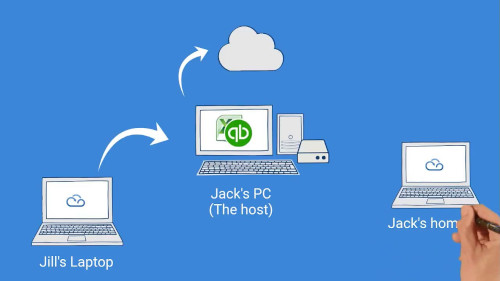If there is one thing 2020 has taught businesses is the importance of having remote work infrastructure.
Millions of employees have learned the significance of having work from home jobs or workplaces with flexible working schedules.
Now, we all have to come to terms with the fact that remote work isn’t a trend that’s just passing by. It’s going nowhere and we have to be adequately prepared to sustain it.
Unfortunately, for 2020 most companies had no instruction manuals for telecommuting.
As a result, companies have had to change their IT infrastructure, amend their budgets, and dos & don’ts to cater to the overnight workplace transition.
Going into 2021, many companies have extended their remote work policies to accommodate working from home indefinitely.
Google, Microsoft, Uber, Airbnb, Twitter, and American Express are among them. Human resource managers must be better prepared to deal with remote work come 2021.
What will Remote Work Look Like in 2021?
Honestly, even a fortune teller wouldn’t have made accurate predictions of remote work in 2020. So, we’ll base our facts on the current trends and behaviors in the workplace.
There’ll be increased use of time tracking apps
Productivity and work discipline are essential elements of remote work success. Working from home has its perks but it also comes with a myriad of distractions. From spouses to kids, friends, and neighbors.
In the office, your supervisors and colleagues are present to keep their eyes on you. At home, you are more in control of your schedule and deliverables so it’s easy to procrastinate.
Time tracking apps help companies keep track of what employees are doing. They keep a log of real-time employee activities with features like screen-sharing.
This way, employees are more accountable and they get to focus more on work. Some of these apps include Traqq, Everhour, RescueTime, and Harvest.
Video conferencing will be used more for training and meetings
Team meetings, training, and seminars are part and parcel of workplaces and institutions.
For teams to collaborate and share their goals and objectives, video conferencing tools have come in handy.
Businesses have realized how much they are saving by using video conferencing tools instead of conducting one-on-one meetings.
Seminars and training have also leveraged video conferencing tools saving companies thousands of dollars spent on booking hotels, travel, and venues.
Zoom, Google Meets, Skype, will continue to be used in 2021. Additionally, companies need to enroll in webinar software like EverWebinar, GoToWebinar, or Webinar Ninja among others to conduct training and seminars.
Increased use of communication tools
One of the most important things with remote working is over-communication.
There has o be seamless communication between managers, employees, and teams for business continuity.
So much can get lost when team members aren’t under the same roof. Projects come to halt without efficient communication.
But like everything else in 2020, there are communication tools that come in handy for business continuity.
Slack, Zoom, Trello, Asana, among others, will ensure your team stays on top of the game. Their UX is excellent so no steep learning curve for teams.
Data security and privacy will become common practice
Something else other than COVID 19 that has been on the rise in cybercrime.
A report by Interpol stated, between February and March 2020, there has been an increase of 569% in cyberattacks. That is an alarming rate that is costing companies billions of dollars.
Working from home has opened up more loopholes for security breaches, phishing attacks, and hackers.
There are millions of employees around the globe using unprotected devices and networks for business exposing company data and systems to malicious attacks.
Basically, we can’t emphasize enough on data security infrastructure while working remotely.
As we move into 2021, businesses are encouraged to do a network security audit so as to know their levels of vulnerabilities and fix them.
They should also train employees on data security and privacy best practices to guide their behavior online.
Remote employees wellbeing will be considered
2020 caught so many employers and employees unprepared for remote work. Most of us were simply going with the flow expecting the madness to stop at some point. However, working from home is looking like the new normal.
Employees have had to come up with a home office, adjust and create new routines, and have stick to normal office hours.
They have to deal with one of the biggest concerns of working from home – work-life-balance. Juggling work and childcare or household chores wasn’t an easy fit. In most cases, it resulted in increased work hours causing burnout.
Getting into 2021, companies should invest in remote workforce wellbeing and engagement. They should let employees figure out a time management system that works best for them.
Flexible working benefits include increased productivity, not burnout.
How to prepare for remote work in 2021
There is one overall solution to prepare yourself and your company for remote work in 2021. That is having the right technological tools.
For every industry, teleworking is different. But for all, technology is the key to bridge the gap between the on-site workforce and the work-from-home workforce.
There are so many software companies that have made it possible business sustainability and continuity.
From team collaboration tools to chat apps, video conferencing, screen sharing, audio recording, and so many others.
And in all these the cloud is at the core of creating successful remote working strategies. It has given businesses a catalyst to adopt the work-from-home concept.
Solutions like MyQuickCloud have come in hand to help teams collaborate from any location around the globe.
Providing remote desktop and remote access solutions with enhanced data security features have made the transition painless.
Companies can rest at ease knowing their employees can seamlessly collaborate and their data and systems are safe.
These cloud-based solutions ensure data can be access anywhere, anytime, and on any device.
In 2021, the right remote work technology combined with communication and collaboration platforms are the keys to unlocking business success.





